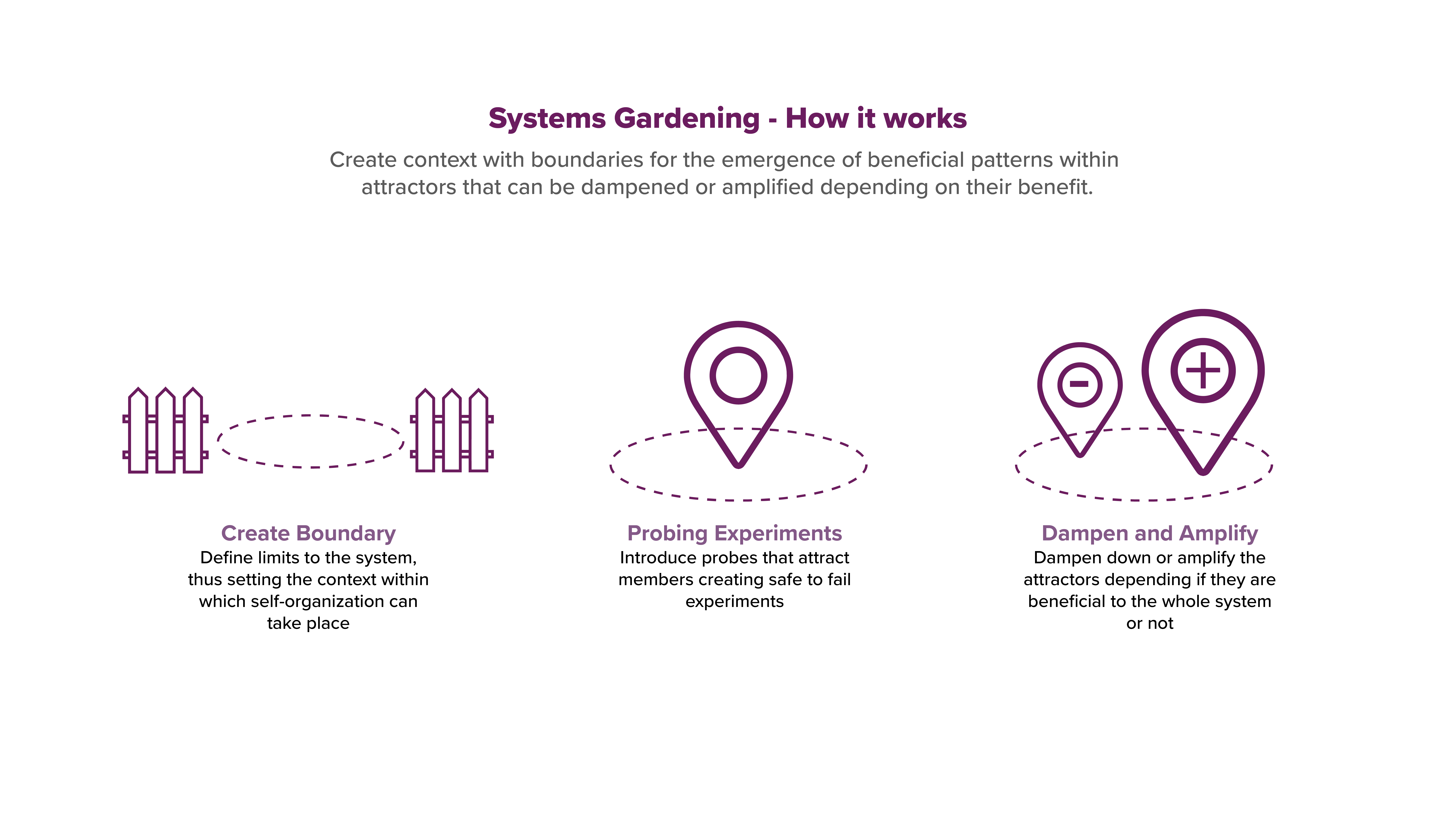"The real voyage of discovery consists, not in seeking new landscapes, but in having new eyes." - Marcel Proust
Every organization is a Naturally Adaptive System. We cannot predict the system's actions or how to achieve the desired outcomes. Thinking in Systems gives us new perspectives and guides us to understand the system better. It takes comparatively less effort to stand outside and see the system, but to bring a systemic change, we have to intervene in the specific points called "leverage points" in a system. The idea of Leverage points was introduced by Donnela Meadows. She explains:
“Leverage points are places within a complex system (a corporation, an economy, a living body, a city, an ecosystem) where a small shift in one thing can produce big changes in everything. They are, therefore, of immense interest to anyone seeking to affect change within our interconnected ecological, social, and economic systems.”

Source: Based on Meadows, 1999; credit: UNDP/Carlotta Cataldi
Due to the non-linear nature of the complex system, the leverage points are counterintuitive. With our common sense, we always look for leverage points in the obvious centralized points manifest in the system, but it is rather found in abstraction. It is shifting from the observable everyday phenomena to looking at information flows and mental models. To understand the various levels of abstraction in a situation or an organization, we can use the systems thinking's iceberg model.
The various levels of abstraction are:
- Events - The observable actions and phenomena
- Patterns - Describe trends over time
- Structure - How the parts are interrelated to influence the patterns
- Models - The mental models that support everything else in the system.
The list of 12 Leverage Points is mapped at different levels of abstraction in an iceberg model.
 Source: SI innovation - Leverage Points Guide
Source: SI innovation - Leverage Points Guide
System Approaches
The following are some system approaches to bring changes to a complex organization.
- Systems Aikido - It is the same as Japan’s modern martial art “Aikido”, bringing change by working with the system rather than against the system.
- Systems Acupuncture - It draws insight from ancient Chinese acupuncture practice by intervening at certain vital points to release blockages and help the system flow back into balance.
- Systems Gardening - It is about creating the context for emergence to take place.
Let's explore more about the Systems Gardening approach and be a system gardener to bring a deep and positive change in the system.
In one of his papers "Redesigning Health Care with Insights from the Science of Complex Adaptive Systems", Paul Plsek shares about Systems Gardening:
"[When dealing with complex adaptive systems] it is more helpful to think like a farmer than an engineer or architect... Engineers and architects need to design every detail of a system. This approach is possible because the responses of the component parts are mechanical and, therefore, predictable. In contrast, the farmer knows that he or she can do only so much. The farmer uses knowledge and evidence from past experience and desires an optimum crop. However, in the end, the farmer simply creates the conditions under which a good crop is possible. The outcome is an emergent property of the natural system and cannot be predicted in detail."
Role of a Systems Gardener
The role of any leader is to be like a "Systems Gardener" and nurture the organization by creating an organic environment for the system to thrive and achieve its goal.
 Source: SI innovation - Leverage Points Guide
Source: SI innovation - Leverage Points Guide
- Context Setting: Complex Adaptive Systems are context-driven, and copy-paste solutions are not available for instant benefits. We have to sense the emerging patterns and adapt our action. Systems change is not fixing an issue or a separate component but creating conducive conditions around that issue. As Jon Kini mentioned in "The Six conditions of system change", we need to work on shifting the conditions that hold the problem in place. Systems thinking is about elevating our thinking to the context within which the parts interact.
- Probing: Introducing probes or safe-fail experiments will allow the nature of emergent possibilities to become more visible. Dave Snowden summarizes this approach when he says:
"We manage the emergence of beneficial coherence within attractors, within boundaries and that allows locally valid solutions to emerge."
- Dampen & Amplify: Complex systems are dynamic in nature, and they are characterized by patterns that emerge through endless interactions. Over time, these emerging system patterns incentivize certain behaviors and constrain others. These are called pattern attractors. As these attractors are the most stable and robust elements, they configure the evolution of complex Adaptive systems. An attractor is a set of reinforcing feedback loops that will stabilize the system within a new pattern. So, dampen down or amplify the attractors depending on if they are beneficial to the whole system or not.
- Growing pockets of the future: There are some details that are currently in low prevalence but will become common in the future. As William Gibson remarked, "A pocket of the future is defined as an observable practice, idea, or thing that is rare and insignificant in the present moment but has the potential to become more prevalent and impactful. Pockets of the futures are important weak signals that have the potential to profoundly influence the organization’s core challenge.”
- Seeding Transitions: The role of a systems gardener is to seed transitions by identifying, connecting, supporting, and spotlighting the pioneers of the new system. By fostering the seeds of new ideas, the system change agent enables transformation through emergence. The systems gardener must support the new pockets of the future and try to build them into viable attractors.
Leveraging Points for Agile Transformation
It is a challenge to identify the key leverage points at different levels of abstraction in an organization. They are contextual. The leveraging points for Agile Transformation could be -
- Engagement of leaders
- Performance management and incentive policy
- Team topology
- Shared mental models about a common goal
- Learning and experimental culture
- Measuring the success
- Hiring policies
- Budgeting
- Technical excellence
- Product discovery
An organization is a living organism. As systems gardeners, our job is to nourish the environment for more experiments, sense the emerging patterns and leverage them.
References
- leverage-points-places-to-intervene-in-a-system/
- Systemsinnovation - Leveraging Points Guide
- Collective Impact Forum (2019). The Six Conditions of Systems Change. YouTube. Available at: Watch video on https://www.youtube.com/watch?v=oqo_s3OnngM&t=1259s
- Linkedin.com. (2021). LinkedIn. [online] Available at: https://www.linkedin.com/pulse/what-pockets-future-greg-githens
- AcademiWales (2016). Dave Snowden - How leaders change culture through small actions. YouTube. Available at: Watch video on https://www.youtube.com/watch?v=MsLmjoAp_Dg





